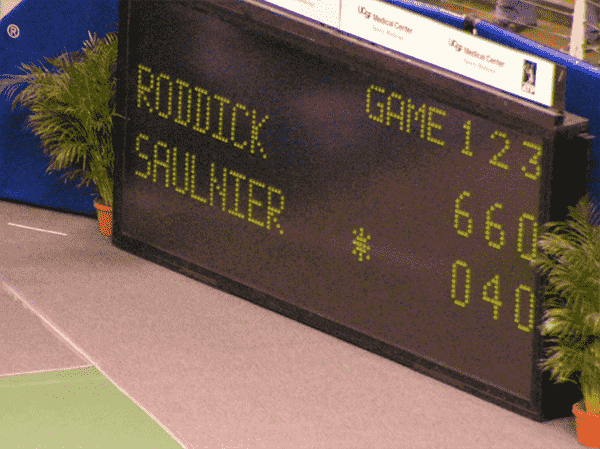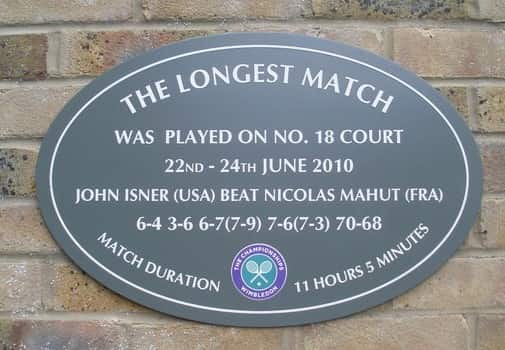Tennis scoring system – Strange but official!
As you know, the tennis scoring system is different than any sport’s scoring system. Which is manifested in the numbers we use: 15-30-40-advantage …
You’ve probably misconceived the scoring board while watching a tennis match on TV. Well, now it is a good opportunity to remove that misunderstanding with great tennis scoring system examples.
We’ll discover together every detail about the tennis scoring system in games, sets, Tie-breaks, and matches step by step.
Tennis scoring system:
Within this article, we’re going to talk only about the scoring system and its rules. For tennis rules, check out this article about tennis rules.
Score system in a game:
To win a game you have to win at least 4 points with a margin of 2 points. During this game, only one player is serving and called the server.
When a player has not yet won any point, we say “Love” instead of “0”. So:
| N° of points won | Score |
|---|---|
| 0 point | “Love” |
| 1st point | “15” |
| 2nd point | “30” |
| 3rd point | “40” |
| 4th point | “game” |
The score of the server is always called first, and the score of the receiver is second.
Here are some tennis scoring system examples: “15-40” means that the server has “15”, and the receiver has “40”.
Or: if the receiver has scored 2 points, and the receiver scored 3 points, then the score is: “30-40”.
Equal score: instead of saying “15-15” or “30-30”, we say “15 all” or “30 all”.
But there is one exception: if each player or team has won three points (that’s 40 each), the score is “deuce”, not “40 all”.
From here, a player must win two straight points to win the game.
If he wins the first point after the “deuce”, that means he’s got the advantage “Advantage -player name-”. Now, only one point is needed to win the game. If he loses it, the score is “deuce” again.
You can also say “Ad-in” when the server has the advantage. Or “Ad-Out” if the receiver has the advantage.
The longest game had 37 deuces, It was in 1975 at the Surrey Grass Court Championships, England. The match was between Keith Glass and Anthony Fawcett.
The scoring system in a set:
To win a set you have to win 6 games with a margin of two games. During a set, the players must alternate the serve at the end of every game.
For scoring, there are two methods: Advantage set and Tie-break set.
The advantage set: to win this set, you should reach 6 games with a lead of two games at least over your opponent. If the score is tied (equal), the game should continue until the margin is accomplished.
For instance: “6-2” or “6-4” or “6-8” or “15-17”.
The tie-break set: to win this set, also you should reach 6 games with a lead of two games at least over your opponent.
But the exception is when the score is tied to “6-6” games each, you will resort to a Tie-break (explained after).
The Tie-break is played only if the score in games is “6-6”. If it was “5-5” you would play 2 more games. The first one to reach 7 games is a set winner by the score of “7-5” or “5-7”.
Score system in a Tie-break:
The tennis scoring system in the game of Tie-break is different. Here, we use the ordinary numbering “1,2,3,4 …”. And the winner is the first one who reaches 7 points with a margin of two points.
Note that the two-point margin has to be respected, even if it takes more than 7 points.
For example, the final score of a Tie-break can be: “7-2 or “5-7” or “10-8” or “14-16”.
During this Tie-break, the players are changing the serve on even numbers. For more details, see tennis serve rules and order.
Tennis scoring system in a match:
Now we can know what makes you a winner of a tennis match!
There are two types of match scores: best of three sets to win, and best of two sets to win.
Best of five sets to win: you should win 3 sets to win a match. This type of tennis scoring system is used in Grand Slam tournaments (4 majors), and only for men.
Best of three sets to win: you should win 2 sets to win a match. This system is used in the WTA and ATP competitions, the DAVIS Cup, and other ITF competitions.
So, to win a match, you should win 3 or 2 sets, not the majority of points or games. You can lose a match even if you won the majority of games or points.
The best example was at Wimbledon 2019 final (Grand Slam tournament) won by Novak Djokovic:
| Novak Djokovic | Roger Federer | |
|---|---|---|
| Total points won | 204 | 218 |
| Total games won | 29 | 36 |
| Total sets won | 3 | 2 |
For the record, Isner (USA) and Mahut (FRA) played the longest tennis match ever. That was at the Wimbledon Championships in 2010.
The match duration was 11 hours and 5 minutes. They played for 3 days because the match was suspended 2 times due to fading light (the score of the 5th set was 70-68).
After 8 years, Isner (USA) AGAIN and Anderson (RSA) played a match that lasted 6 hours 36 minutes (the score of the 5th set was 24-26).
Then, the championship changed the rules of the 5th set in October 2018 to prevent these marathon matches: when the score of games reaches 12-12, a Tie-break will be held to determine the winner of the match.
That’s all for the tennis scoring system. And don’t forget to tell us in the comments what rule you like/dislike, and the strangest rule.


